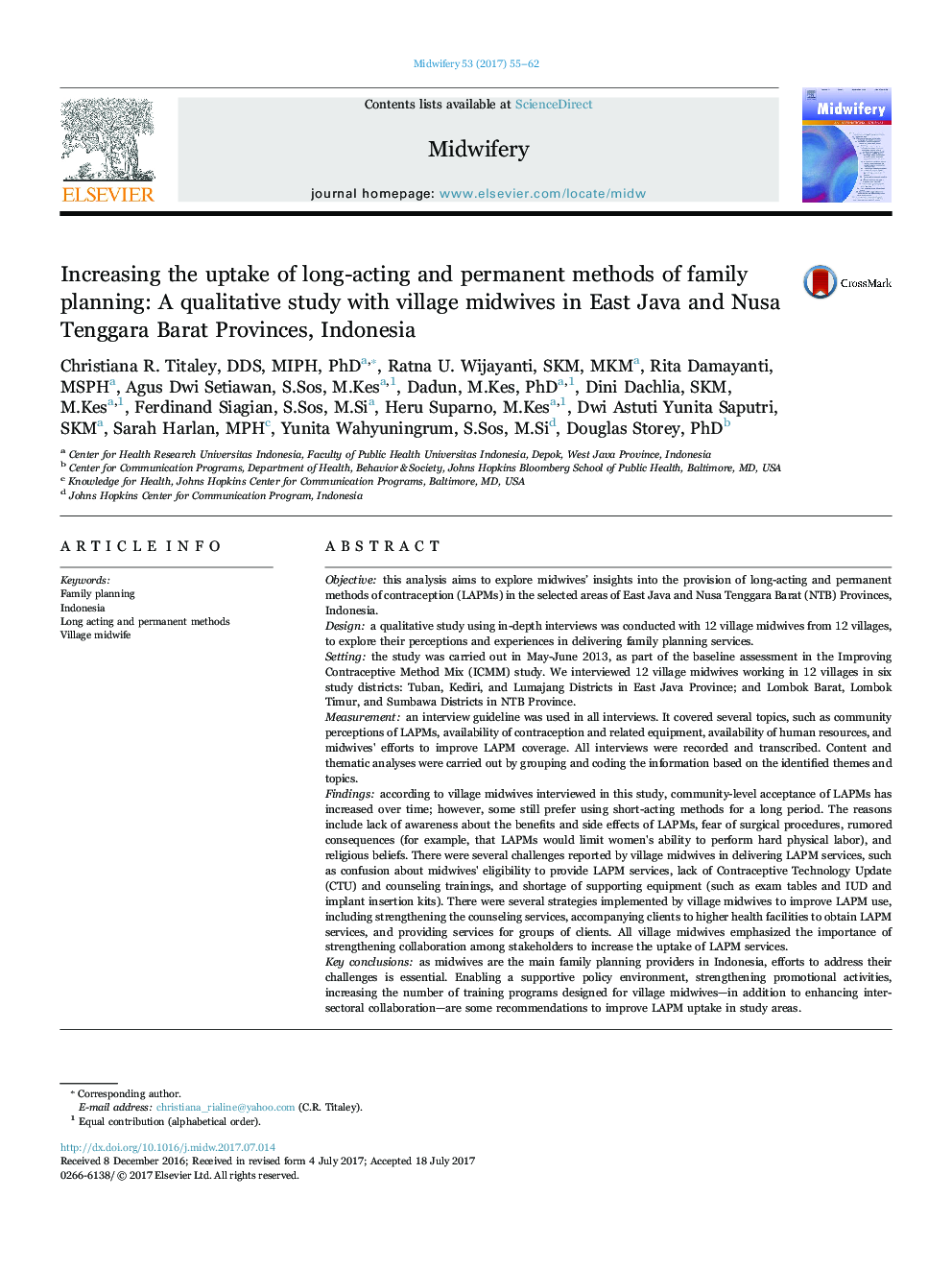| Article ID | Journal | Published Year | Pages | File Type |
|---|---|---|---|---|
| 5122188 | Midwifery | 2017 | 8 Pages |
â¢Shortage of knowledge about LAPMs-resulting in misconceptions at the community level-can prevent utilization of LAPMs.â¢Confusion about midwives eligibility to deliver family planning services can further hinder LAPM availability and utilization.â¢Village midwives have limited opportunities to attend CTU and counseling trainings.â¢Only a few midwives have IEC materials to use during family planning counseling sessions.â¢There was a shortage of LAPM-related equipment among village midwives.
Objectivethis analysis aims to explore midwives' insights into the provision of long-acting and permanent methods of contraception (LAPMs) in the selected areas of East Java and Nusa Tenggara Barat (NTB) Provinces, Indonesia.Designa qualitative study using in-depth interviews was conducted with 12 village midwives from 12 villages, to explore their perceptions and experiences in delivering family planning services.Settingthe study was carried out in May-June 2013, as part of the baseline assessment in the Improving Contraceptive Method Mix (ICMM) study. We interviewed 12 village midwives working in 12 villages in six study districts: Tuban, Kediri, and Lumajang Districts in East Java Province; and Lombok Barat, Lombok Timur, and Sumbawa Districts in NTB Province.Measurementan interview guideline was used in all interviews. It covered several topics, such as community perceptions of LAPMs, availability of contraception and related equipment, availability of human resources, and midwives' efforts to improve LAPM coverage. All interviews were recorded and transcribed. Content and thematic analyses were carried out by grouping and coding the information based on the identified themes and topics.Findingsaccording to village midwives interviewed in this study, community-level acceptance of LAPMs has increased over time; however, some still prefer using short-acting methods for a long period. The reasons include lack of awareness about the benefits and side effects of LAPMs, fear of surgical procedures, rumored consequences (for example, that LAPMs would limit women's ability to perform hard physical labor), and religious beliefs. There were several challenges reported by village midwives in delivering LAPM services, such as confusion about midwives' eligibility to provide LAPM services, lack of Contraceptive Technology Update (CTU) and counseling trainings, and shortage of supporting equipment (such as exam tables and IUD and implant insertion kits). There were several strategies implemented by village midwives to improve LAPM use, including strengthening the counseling services, accompanying clients to higher health facilities to obtain LAPM services, and providing services for groups of clients. All village midwives emphasized the importance of strengthening collaboration among stakeholders to increase the uptake of LAPM services.Key conclusionsas midwives are the main family planning providers in Indonesia, efforts to address their challenges is essential. Enabling a supportive policy environment, strengthening promotional activities, increasing the number of training programs designed for village midwives-in addition to enhancing inter-sectoral collaboration-are some recommendations to improve LAPM uptake in study areas.
